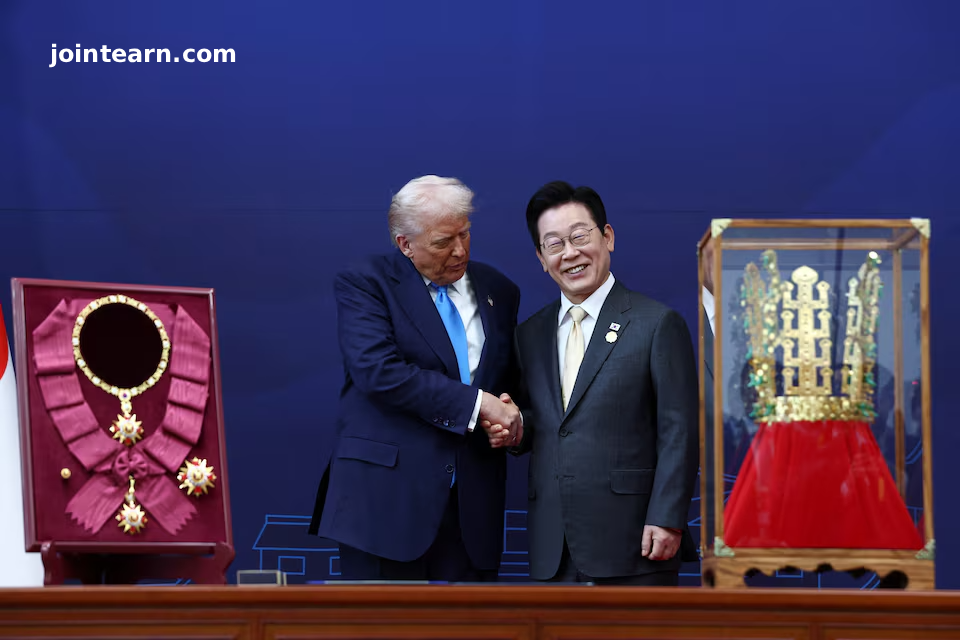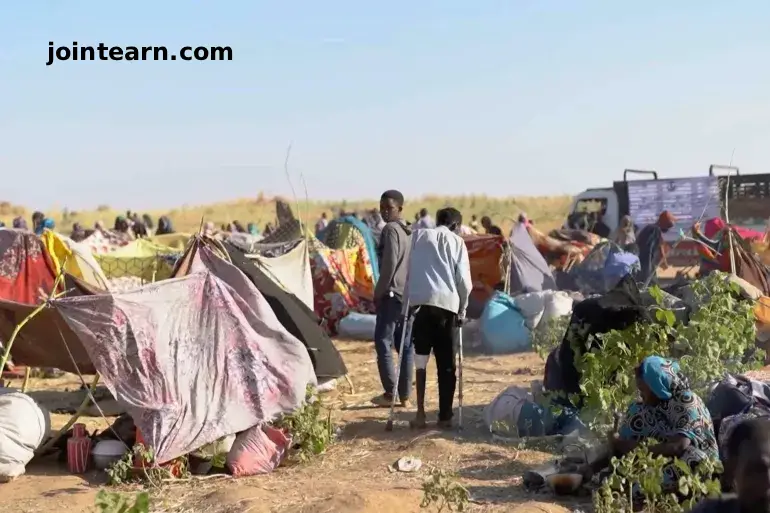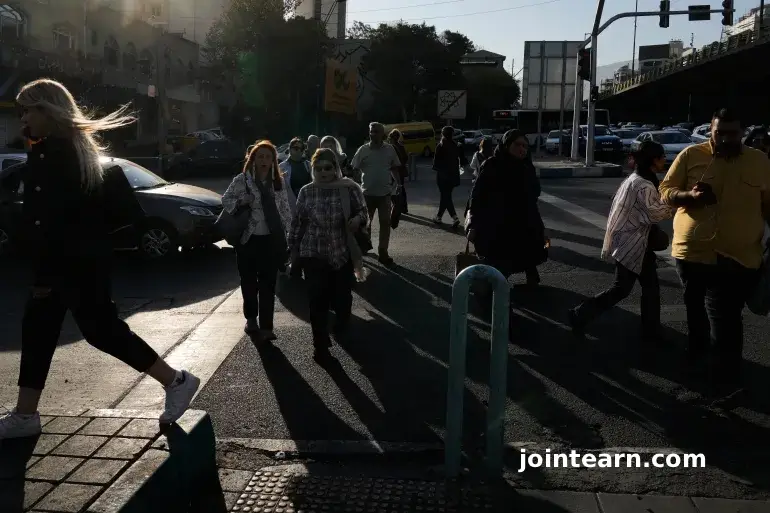
Trump Concludes Asia Tour with Optimism on Trade Deals with South Korea and China
GYEONGJU, South Korea, Oct. 29, 2025 — U.S. President Donald Trump wrapped up the final leg of his five-day Asia tour in South Korea on Wednesday, signaling optimism over resolving key trade disputes with both Seoul and Beijing. Trump’s meetings come at a pivotal time for global trade, security, and U.S.-China relations.
Arriving from Tokyo just hours after North Korea test-fired a nuclear-capable cruise missile, Trump was greeted with full diplomatic honors by South Korean President Lee Jae Myung in Gyeongju — the host city of this year’s Asia-Pacific Economic Cooperation (APEC) forum.
Trade and Security Talks with South Korea
Speaking at the APEC CEO Summit, Trump said a long-awaited trade deal with South Korea was “very close,” though negotiators have played down expectations for a breakthrough this week.
The two nations have been negotiating the terms of a $350 billion investment package, agreed in July, intended to shield South Korea from the harshest U.S. tariffs. However, discussions have stalled over how those investments will be structured.
During a bilateral meeting at the Gyeongju National Museum, President Lee honored Trump with the Grand Order of Mugunghwa, South Korea’s highest civilian decoration, and a symbolic gold crown. Trump, known for his showmanship, joked, “I’d like to wear it right now.”
At their working lunch, Lee pledged to boost defense spending — an effort to address Trump’s concerns that U.S. allies are not contributing enough to regional security. The South Korean leader also requested U.S. approval to reprocess nuclear fuel for submarine power, which is currently prohibited under a bilateral agreement.
Trump, in turn, pledged to help “straighten out South Korea’s problems” with its nuclear-armed northern neighbor, though he noted that a planned meeting with Kim Jong Un would not take place due to scheduling conflicts.
China Talks: Tariffs, Fentanyl, and AI Chips
The most closely watched segment of Trump’s Asia trip will come on Thursday in Busan, where he is scheduled to meet Chinese President Xi Jinping.
Trump told reporters aboard Air Force One that he expects the talks to yield “a very good outcome for our country and for the world.” He confirmed that the U.S. may cut tariffs on Chinese goods in exchange for Beijing’s commitment to limit exports of fentanyl precursor chemicals.
According to the Wall Street Journal, the U.S. could halve its current 20% tariff rate if China delivers concrete action on fentanyl controls — an issue Trump has repeatedly tied to America’s opioid crisis.
China’s Foreign Ministry responded positively, saying the meeting “will inject new momentum into U.S.-China relations” and expressed readiness to work toward “positive outcomes.”
The White House also confirmed that Trump will raise the issue of Nvidia’s advanced AI chips, particularly the Blackwell series, which have become a major point of contention in U.S.-China tech talks.
When asked whether Taiwan would be on the agenda, Trump said he was uncertain. He reiterated that Xi had assured him there would be no invasion of Taiwan during his presidency, but he has yet to approve new U.S. arms sales to Taipei.
Taiwan’s Foreign Minister Lin Chia-lung expressed confidence, saying he was not concerned that Trump would “abandon” the island’s interests.
A Whirlwind Tour of Asia
Trump’s stop in South Korea concludes a fast-paced regional tour that took him through Malaysia, Japan, and now South Korea — a trip aimed at resetting trade relations with key U.S. allies while countering China’s growing influence.
In Malaysia, Trump announced a series of new trade agreements and facilitated a truce between Thailand and Cambodia following a recent border dispute.
In Tokyo, he met Prime Minister Sanae Takaichi, Japan’s first female leader, praising her plan for an expanded military buildup and signing new trade and rare-earth supply deals. Tokyo’s $550 billion investment pledge into U.S. industries was highlighted as a cornerstone of bilateral cooperation.
Washington has pressed South Korea for a similar investment structure, though Seoul has argued it cannot deliver the full $350 billion upfront. Instead, it has proposed a phased approach combining investments, loans, and guarantees.
Global Stakes and Market Reaction
Trump’s Asia tour has had significant geopolitical and economic implications, particularly amid rising global market optimism.
News of a potential U.S.-China tariff truce has already boosted global stock indices to record highs, signaling investor confidence in easing trade tensions.
Beijing’s decision this week to resume U.S. soybean purchases — its first in months — is also seen as a goodwill gesture that could help mend strained trade relations and support American farmers, a key part of Trump’s political base.
Looking Ahead
As Trump wraps up his Asia tour, analysts say his meetings could shape the next phase of U.S. trade and foreign policy in the Indo-Pacific.
“Trump’s outreach to both South Korea and China is an attempt to balance economic pressure with diplomatic pragmatism,” said an analyst at the Brookings Institution. “If successful, it could redefine U.S.-Asia relations heading into 2026.”
With eyes now on Thursday’s Trump–Xi meeting in Busan, the world awaits whether the American president can turn his tariff diplomacy into tangible economic wins — and perhaps, a rare moment of calm in the often turbulent U.S.-China relationship.


Leave a Reply